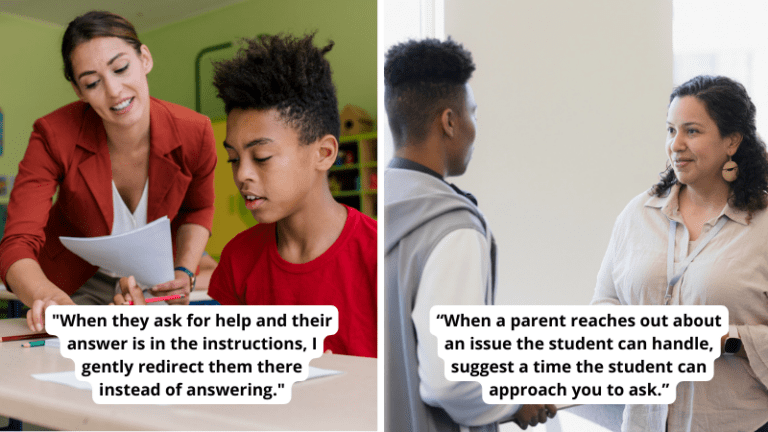They may be all grown up, but parents of school-age kids sometimes still fear the principal and hesitate to approach with questions or concerns. The problem with that is you need parent and family feedback in order to better reach your shared goal of helping children succeed. Are you an approachable principal? Here’s a quick checklist to find out and learn how to put parents at ease.
1. Show Up in Their Mailbox
Send regular emails and newsletters to families, sharing important school-related dates and information with them. This makes you a helpful resource and is the first step toward two-way communication with families.
2. Have an Open-Door Policy
Walk the hallways, stand outside during drop-off and pickup, and attend school events whenever possible. These are all moments when parents are likely to be at the school. The more your path crosses with theirs, the more likely they are to chat and share concerns or feedback.
3. Be Friendly
Yes, you’re the principal and need to be thought of as a disciplinarian, but if you seem too intimidating, staff, parents, and students may work to avoid you. So smile in the halls, nod a greeting, give a high five. You can still be an effective authoritative figure while being friendly.
4. Create a Welcoming School Environment
Let parents know they’re welcome in the school and your office anytime. Say so in newsletters and emails at the beginning of the school year and reiterate it throughout the year. Be sure your front-office staff is receptive to parents and doesn’t treat them as an interruption or bother.
5. Involve Parents
Invite them to volunteer in classrooms and at school events. Update them on activities and clearly explain how they can help.
6. Be a Bridge
Teachers are the main connection between parents and their child’s school. Principals should be too. When Mom or Dad calls or emails with questions or concerns, respond as soon as possible in an informative, pleasant way.
7. Remember You All Have the Same Goal
You, the child’s caregiver, and the teacher are all on the same team, working to promote educational, personal, and social growth in each student. Even if the caregiver isn’t present or engaged, reach out on behalf of their child.
8. Ask for Feedback
Send an email, survey, or letter home asking parents to share their and their child’s experience at the school thus far. Keep it confidential. If families know you’re interested in what they think, they’re a lot more likely to share their thoughts with you.
9. Get Teachers On Board
Train your teachers to effectively communicate with parents without feeling intimidated by them. A feeling of open, productive communication between teachers and parents can translate to open communication with you.
10. Be Real
As a fellow adult and/or parent, you deal with many of the same issues as the parents in your school. Connect with parents and become relatable by sharing brief, on-topic personal experiences, whether it’s an anecdote about your own child or a hectic life.
11. Use Social Media
It’s another entry point for connection and communication with families, so consider creating a Facebook page, Twitter, and Instagram account for the school. The more parents feel looped into the school, the more comfortable they’ll feel approaching you.
12. Be Engaged
When you’re at a choir concert or sporting event, don’t just observe from the sidelines. Have a seat in the family-filled audience (if there’s one available) and actively enjoy the event. Afterward, chat with students and families about what you all just experienced together.
Join our Facebook group Principal Life for more ideas on how to transform your school.

